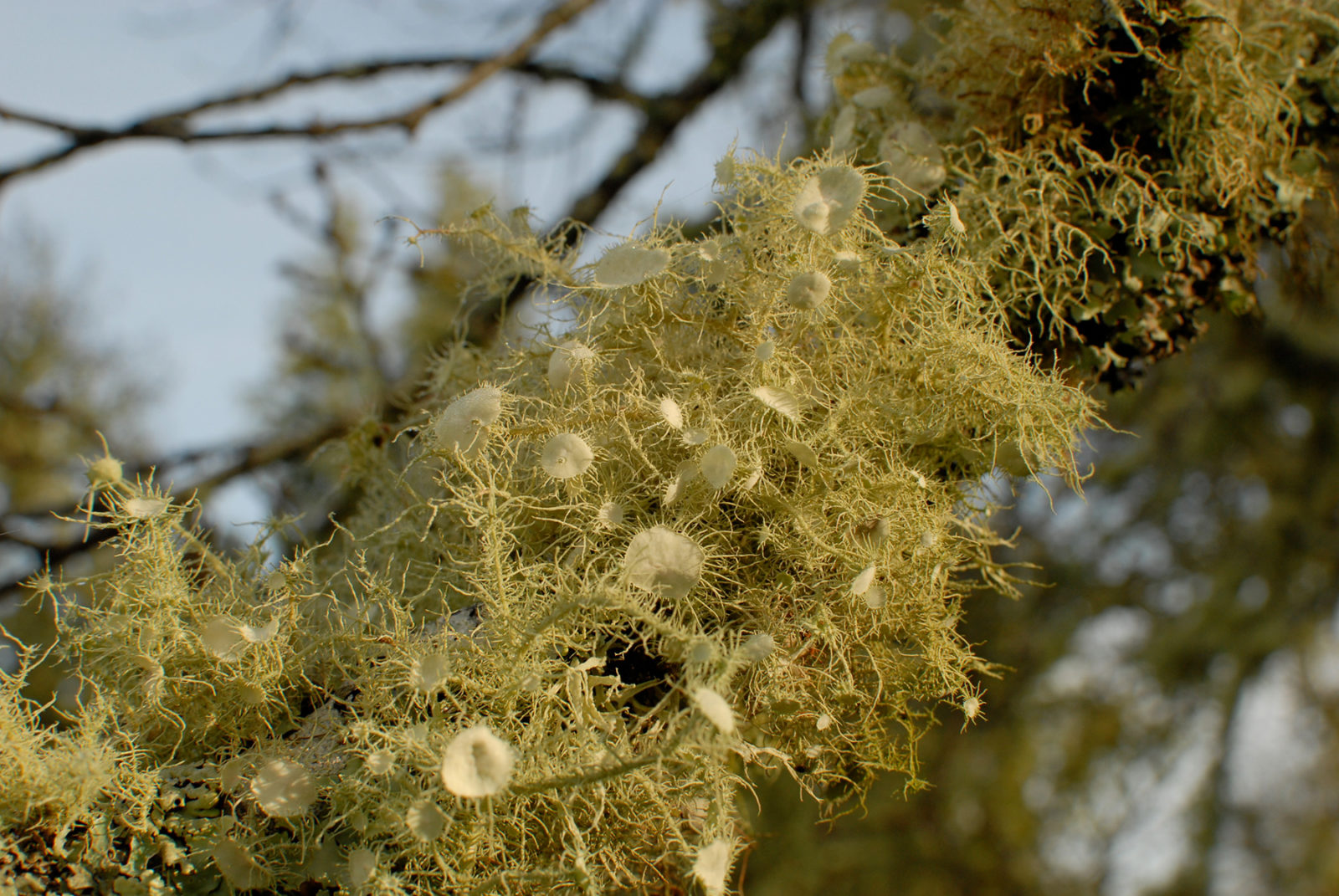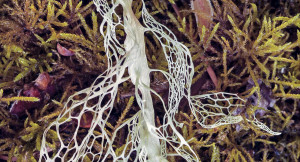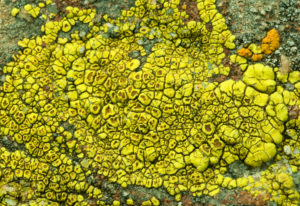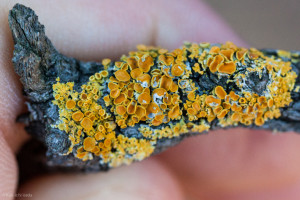Northern parulas, pretty little eastern U.S. warblers, like to make nests with the Spanish moss that drapes so iconically from big oaks in the South. Like many birds, sometimes one strays to California; I’ve seen them near Point Reyes’s Bear Valley Visitor Center. Sometimes two of them stray here, meet, and even nest. They build with what lots of us here call “Spanish moss”— beard lichens and lace lichens, plentiful in moist and oaky spots like Bear Valley.
The Spanish moss of the Southeast isn’t moss and isn’t particularly Spanish. It’s a flowering plant no more related to our beard and lace lichens than it is to us. Parulas evidently have a folk taxonomy similar to ours.
Lichens of any sort aren’t plants. Lichens are not so much a taxonomic category as a way of life; as lichenologist Trevor Goward put it, “Lichens are fungi that have discovered agriculture.”
There are some 13,000 species of fungi involved in these mutual-benefit associations between fungi and algae or cyanobacteria. The non-fungal partner will be one of only 40 species — so a given algal species may inhabit more than one kind of fungus. Nobody in this club is a plant, according to current taxonomy.
Our beard and lace lichens have one thing in common with the Spanish moss back East: They’re pioneers, practically spacefarers. These and a few other lichens have leapt from the rocks and bark to live in — and live on — the atmosphere.
Our flying lichens don’t parasitize the trees they festoon. They land there as spores or (especially Usnea) as loose bits of their parents and take hold, then spin nets or long branched lines to fish for moisture and nutrients from the air.
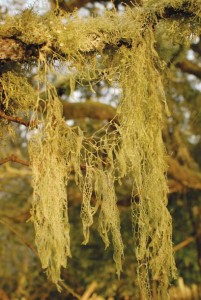
Around Bear Valley, as in other similar places, we’re looking at two similar but unrelated lichen genera: lace lichen (Ramalina menziesii) and old man’s beard (Usnea sp.). I can’t count on telling them apart without having them in hand, and it takes chemical testing and microdissection to sort out the various Usnea species. If you take a bit of R. menziesii in hand and unroll it gently, you’ll find a fishnetty structure, like lace, efficient for gathering nutrients from fog and ambient moisture. Usnea lichens look more like upside-down trees, with a central cord from which other cords branch.
Some trees, as well as atmospheres, are more welcoming to lichens than others, for reasons of complex chemistry or simple texture. You don’t see many lichens on blue gum eucalyptus because it sheds big chunks of bark so frequently that it’s hard for a lichen to get a foothold.
Beard and lace lichens have a way of making a tree look ancient. There’s some rough correlation between the age of the tree and the amount of lichen on it, just because an older tree has been there longer, giving the lichens’ flying offspring more chances to land and colonize.
As far as we know, beard and lace lichens take nothing from their host trees. They must be a little more particular about their homebase than eastern Spanish moss is, because you can see the latter flying from utility wires, while these lichens are almost always based in trees.
But they colonize trees of many species — oaks, alders, bay laurels, willows, pretty much what’s handy — and don’t sap their hosts’ strength the way mistletoe can. Mistletoe has rootlike parts that not only grip a tree but sink into it and take nutrients. Lichens just hang on. They look perfectly happy on a dead tree, as long as the bark they’re clinging to hasn’t fallen off.
Meanwhile, back on the branch, we and the parula warblers see graceful, inviting scarves of beard lichens waving at us from stately oaks and we get romantic. Hutton’s vireo, a little gray bird who’s native here, is even more wedded to Usnea lichens than that nostalgic warbler is; the bird’s range is defined by the lichens’. Evidently the vireo has decided that beard lichen is not just décor or camouflage, it’s a necessary element for nest building.
Kashaya Pomo used lace lichen for baby diapers “and other sanitary purposes.” It’s the California Lichen Society’s favored candidate for State Lichen. Unaccountably, the legislature has not yet acted on this.

